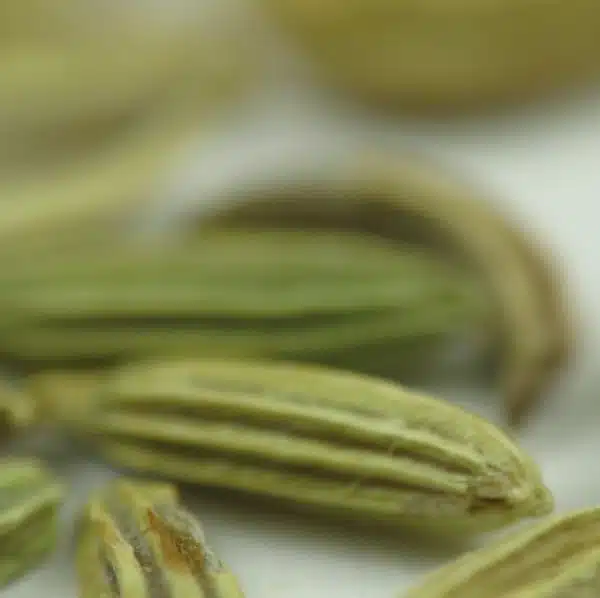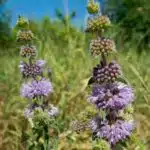Fennel is an herb that belongs to the Apiaceae family, which is native to Southern Europe and the Mediterranean region. It is a versatile herb with a distinctive flavor that has been used in culinary and medicinal purposes for centuries. Growing fennel can be a rewarding experience for gardeners as it adds an element of flavor and fragrance to any garden.
Fennel requires specific growing conditions, including full sun exposure, well-drained soil, and regular watering. It can be grown from seed or cuttings, but it is important to note that fennel has a long taproot that makes transplanting difficult. Understanding the growth habits and requirements of fennel will allow gardeners to cultivate healthy plants that produce flavorful leaves and seeds. In this article, we will explore the steps required to successfully grow fennel in your home garden or farm.
Introduction To Fennel
Fennel is a herbaceous plant that belongs to the Apiaceae family. It is widely grown for its edible bulb and leaves, which have a distinct aniseed flavor. There are several varieties of fennel, including Florence (or finocchio), bronze, and common fennel. Florence fennel has a bulbous base that is used in salads or roasted dishes, while bronze and common fennel produce feathery foliage that can be used as a garnish or seasoning.
Apart from its culinary uses, fennel has been traditionally used for medicinal purposes. It is believed to aid digestion, relieve colic and gas, and reduce inflammation. The seeds of the fennel plant are also used as a spice in various cuisines around the world. They can be ground or toasted to release their flavor and aroma.
Fennel requires specific growing conditions to thrive. These include well-draining soil with plenty of organic matter, full sun exposure, and regular watering. Understanding these requirements is crucial for successfully cultivating fennel in your garden or farm. In the next section, we will delve deeper into these growing requirements and provide practical tips for nurturing healthy fennel plants.
Understanding Fennel’s Growing Requirements
After learning about the introduction to fennel, it’s now time to dive into the growing requirements of this aromatic herb. As the saying goes, “you reap what you sow”, and in the case of fennel, this couldn’t be truer. Before starting your journey with growing fennel, it’s important to know that there are two types of fennel: Foeniculum vulgare (commonly known as sweet or Florence fennel) and Foeniculum vulgare var. dulce (known as bronze or common fennel). Both varieties offer a unique taste and aroma but have different growing conditions.
When it comes to planting fennel, it’s critical to choose the correct location. Fennel is a sun-lover that thrives in well-drained soil with a pH range of 6.0-8.0. It can tolerate dry conditions but prefers moist soil for optimal growth. Benefits of growing fennel include its ability to attract beneficial insects like ladybugs, lacewings, and hoverflies that provide natural pest control for other plants in your garden.
Choosing the right variety of fennel is also essential for successful growth. The best varieties for home gardens include Florence Fennel ‘Zefa Fino’ and Common Fennel ‘Bronze’. These varieties are easy to grow and provide an abundance of flavorful bulbs and foliage for culinary use. In our next section, we will discuss in detail how to select the perfect location for planting fennel so that you can enjoy all its benefits throughout the year without any hassles!
Choosing The Right Location For Growing Fennel
Choosing the right location for growing fennel is crucial to its success as a crop. The first factor to consider is sunlight. Fennel requires full sun exposure in order to thrive. Therefore, it is important to choose a location that receives at least six hours of direct sunlight each day. If you live in an area with hot summers, it may be beneficial to choose a spot where the plants can receive partial shade during the hottest parts of the day.
Another important factor to consider when choosing a location for growing fennel is soil acidity levels. Fennel prefers a slightly acidic soil with a pH level between 5.5 and 6.8. To determine the acidity level of your soil, you can purchase a simple testing kit from your local garden center or nursery. If your soil is too alkaline, you can add sulfur or peat moss to lower the pH level.
In addition to sunlight and soil acidity levels, it is also important to choose a location that has well-draining soil. Fennel does not tolerate wet feet and will quickly rot if planted in soil that retains too much moisture. To ensure proper drainage, you can amend your soil with compost or sand before planting your fennel seeds or transplants. In the next section, we will discuss how to prepare your soil for optimal fennel growth and health.
Preparing The Soil For Fennel
Back in the day, farmers used to prepare their soil by turning the earth with a plow. Nowadays, we have more efficient methods of preparing our soil for planting. When it comes to growing fennel, soil preparation is crucial to ensure that it gets the nutrients it needs to thrive.
Before planting fennel, make sure to clear the area of any weeds or debris. This will help ensure that your fennel plants don’t have to compete with other plants for nutrients. Once you’ve cleared the area, add compost or other organic matter to increase the nutrient content of your soil. Fennel requires well-draining soil with plenty of organic matter and a pH level between 5.5 and 6.8.
Fennel is a heavy feeder, which means that it requires plenty of nutrients to grow properly. In addition to adding compost or other organic matter before planting, you may also want to consider fertilizing your fennel throughout its growing season. Look for a fertilizer that is high in nitrogen and potassium, but low in phosphorus, as too much phosphorus can interfere with the uptake of other important nutrients like iron and zinc. With proper soil preparation and nutrient management, your fennel plants are sure to thrive!
To continue growing healthy fennel plants from seeds, there are certain steps you need to follow carefully. Starting fennel from seeds requires patience and attention to detail; however, once they start sprouting up through the ground, you’ll be rewarded with deliciously fragrant bulbs that are perfect for cooking and seasoning various dishes!
Starting Fennel From Seeds
After preparing the soil, it’s time to move on to the next step in growing fennel – starting from seeds. Fennel is a hardy plant that is quite easy to grow from seeds. However, there are some important germination tips you should keep in mind to ensure success.
To begin with, choose a sunny spot in your garden with well-draining soil. Sow the fennel seeds directly into the soil about 1/4 inch deep and 12 inches apart. Water the area gently but thoroughly after seeding. Keep the soil moist but not waterlogged until the seedlings emerge in about 7-14 days.
Once the seedlings have grown a few inches tall, it’s time to transplant them. Carefully dig out each seedling and replant them 12-18 inches apart in rows or individual pots if you prefer container gardening. Remember to water them immediately after transplanting and keep them well-watered until they become established. This ensures healthy growth and a bountiful harvest of fresh fennel fronds for all your culinary needs!
Now that you’ve transplanted your fennel seedlings, it’s only a matter of time before they mature into full-grown plants. But first, let’s take a closer look at planting fennel seeds – an essential step in cultivating this flavorful herb!
Planting Fennel Seeds
Selecting the right seeds for planting is crucial to the success of growing fennel. Choose high-quality fennel seeds that are fresh and have not been exposed to moisture or extreme temperatures. Before planting, soak the seeds overnight in water to help speed up germination. Fennel seeds can be planted directly into the ground or started indoors in trays.
Germination techniques vary depending on whether you are planting outdoors or indoors. If planting outdoors, choose a location with well-draining soil and full sun exposure. Sow the seeds ¼ inch deep and cover lightly with soil. Water gently but thoroughly and keep the soil moist until seedlings emerge, which can take up to two weeks. For indoor starting, use shallow trays filled with potting mix and sow seeds as directed above. Cover trays with plastic wrap to create a humid environment and place in a warm area until seedlings emerge.
Transplanting seedlings should be done once they have at least two sets of leaves and are strong enough to withstand being moved. Space seedlings about 12 inches apart in rows that are at least 18 inches apart. Thinning seedlings is also important to ensure proper spacing and growth. Remove weaker or damaged seedlings to allow more space for healthier ones to grow. With these steps in mind, you will be well on your way to successfully growing fennel from seed!
As we move forward, it is important to note that growing fennel in containers is another viable option for those who may not have access to outdoor space or prefer a more controlled environment for their plants.
Growing Fennel In Containers
Fennel is a great herb to grow in containers as it is easy to maintain and has a very distinct flavor. However, it’s important to choose the right size of container for your fennel plants. The minimum size for a container should be around 12 inches deep and wide, but a larger container will allow for more root growth and can result in larger plants. Keep in mind that fennel has a taproot, so make sure the container is deep enough to accommodate this.
When growing fennel in containers, it’s important to pay attention to watering frequency. Fennel prefers well-drained soil that is kept evenly moist but not waterlogged. As such, it’s important not to overwater or underwater your fennel plants. A good rule of thumb is to water when the top inch of soil feels dry to the touch. During hot summer months, you may need to water more frequently than during cooler months.
Overall, growing fennel in containers can be a rewarding experience with just a little bit of effort put into choosing the right container size and watering frequency. With proper care and attention, you’ll be able to enjoy fresh fennel leaves and bulbs throughout the growing season.
As we’ve discussed, watering frequency is an essential aspect of growing healthy fennel plants in containers. In the next section, we will delve deeper into how often you should water your fennel plants and what signs to look out for if they are not getting enough or too much water.
Watering Fennel Plants
- Fennel plants, an annual herb, prefer a soil that is rich in organic matter and well-draining, with a pH of 6.0 to 7.0.
- Fennel plants require regular and consistent watering in order to thrive; however, they are prone to root rot when overwatered.
- To reduce evaporation, it is recommended to mulch around the plant to maintain soil moisture.
- In most cases, fennel plants should be watered two to three times a week during the warmer months and one to two times a week during the cooler months.
- When watering fennel plants, water should be applied slowly and deeply at the base of the plant.
- Allowing the top inch of soil to dry between watering is ideal, as too frequent watering can lead to root rot and nutrient deficiencies.
Watering Frequency
Watering fennel plants is an essential task that every gardener should prioritize. A consistent watering schedule will ensure that the plant thrives and produces high-quality bulbs. When it comes to watering frequency for fennel, there are a few key points to keep in mind.
Firstly, it’s crucial not to overwater your fennel plants. Overwatering can lead to root rot and other fungal diseases. Signs of overwatering include yellowing leaves and stunted growth. Therefore, it’s best to water your fennel plants deeply once a week rather than giving them frequent shallow watering sessions.
Secondly, the amount of water required will depend on various factors such as soil type, climate, and whether the plant is grown in a container or in-ground. In general, fennel requires moderate moisture levels to grow well. During hot summer months or drought conditions, you may need to increase the frequency of watering slightly.
In conclusion, when it comes to watering your fennel plants, consistency is key. By maintaining a regular watering schedule and balancing the amount of moisture with soil conditions and weather patterns, you can help ensure that your plants thrive throughout their growing season without any issues caused by over or under-watering.
Soil Requirements
When it comes to growing fennel plants, there are various factors that gardeners need to consider to ensure a successful harvest. One of the most critical aspects is soil requirements. Fennel requires well-draining soil with a pH level between 6.0 and 8.0 for optimal growth. Gardeners can amend their soil with organic matter or fertilizers to achieve the best conditions for fennel growth.
The best fertilizers for fennel include compost, aged manure, and fish emulsion as they provide essential nutrients while improving soil texture and structure. However, excessive use of nitrogen-rich fertilizers can lead to weak stems and foliage growth rather than bulb formation. On the other hand, insufficient fertilizer application can cause stunted growth and yellowing leaves.
Common soil problems for growing fennel include poor drainage, compacted soil, and nutrient deficiencies. Gardeners should ensure adequate drainage by avoiding waterlogging the soil or planting in low-lying areas. Additionally, they can improve soil structure by tilling the ground regularly or using raised beds. Nutrient deficiencies such as iron and magnesium can be addressed through foliar feeding or applying micronutrient-rich fertilizers to the soil around the plant’s base. By addressing these issues, gardeners can grow healthy fennel plants with high-quality bulbs that are perfect for culinary use.
Mulching
Watering is one of the essential tasks in growing fennel plants, but it is not enough to ensure their optimal growth and development. Gardeners can also benefit from using mulch around their fennel plants. Mulching has several benefits for fennel plants, such as retaining moisture, suppressing weeds, reducing soil erosion, and regulating soil temperature.
There are different types of mulch that gardeners can use for their fennel plants. Organic mulches such as straw, leaves, grass clippings, and shredded bark are excellent choices as they decompose over time and add nutrients to the soil. They also help improve soil structure by increasing its organic matter content. On the other hand, inorganic mulches like rocks, gravel or plastic sheets offer long-lasting weed suppression and moisture retention but do not enrich the soil.
Gardeners should apply a 2-3 inch layer of mulch around the base of their fennel plants, making sure not to cover the stem or foliage directly. Mulching should be done after planting when the soil is moist to prevent trapping air pockets beneath the mulch layer. With proper watering and mulching practices, gardeners can grow healthy fennel plants that produce high-quality bulbs perfect for culinary use.
Fertilizing Fennel Plants
After ensuring proper watering techniques for your fennel plants, fertilizing them is the next step in maintaining their health and growth. A study showed that fennel plants with adequate fertilizer produced significantly higher yields compared to those without. Fertilizers provide necessary nutrients that support the plant’s growth and development.
When it comes to fertilizing fennel plants, there are two main types of fertilizers: organic and synthetic. Organic fertilizers come from natural sources such as compost or manure, while synthetic fertilizers are chemically produced. Both can be effective in providing essential nutrients to fennel plants, but organic fertilizers typically have a slower release time and may require more frequent applications.
It is recommended to apply fertilizer to fennel plants every four to six weeks during the growing season. When using synthetic fertilizers, be sure to follow instructions carefully as over-fertilization can lead to burning of the plant’s roots. Organic fertilizers may require larger amounts and should be worked into the soil around the base of the plant. By properly fertilizing your fennel plants, you can ensure healthy growth and an abundant harvest.
As important as watering and fertilizing is pruning your fennel plants. Pruning helps remove dead or diseased stems and leaves, encourages new growth, and maintains overall plant health. It is best to prune when the plant has reached a height of 12-18 inches by removing any yellowed or wilted leaves at the base of the stem. Additionally, cutting back flower stalks before they fully develop can help redirect energy towards leaf production rather than seed production. Proper pruning can lead to healthier and more productive fennel plants.
Pruning Fennel Plants
Pruning is essential in maintaining healthy and productive fennel plants. Regular pruning promotes the development of new shoots and enhances the plant’s overall shape. The best tools for pruning fennel are sharp and clean pruning shears or scissors. Pruning should be done carefully to avoid damaging the stem or leaves, as this may lead to infection or disease.
The timing of pruning for fennel plants depends on their growth stage. Young plants should not be pruned until they have reached a height of at least 6 inches. This ensures that the plant has enough foliage to support its growth. Once established, fennel plants can be pruned every few weeks to keep them in shape and encourage new growth. However, it is important to avoid over-pruning, as this can cause stress to the plant.
In conclusion, pruning is an integral part of growing healthy fennel plants. Using the best tools for pruning and timing your pruning sessions appropriately will ensure that your plants thrive and produce high-quality yields. Once you have mastered the art of pruning, you can move on to harvesting your fennel leaves for use in cooking or other applications. Let’s explore how to harvest fennel leaves in the next section.
Harvesting Fennel Leaves
After pruning your fennel plants, it is important to allow them to grow undisturbed. Fennel thrives in well-drained soil and full sunlight, so be sure to plant them in a location that provides these conditions. Once established, fennel requires minimal care and attention.
One of the main uses of fennel leaves is in cooking. The delicate leaves have a subtle flavor that pairs well with fish dishes, salads, and soups. They can also be used as a garnish or added to tea blends for their medicinal properties. There are many recipes that incorporate fennel leaves, such as roasted salmon with fennel and orange or shaved fennel salad with lemon vinaigrette.
If you plan on using fennel leaves for cooking or medicinal purposes, it is best to harvest them when they are young and tender. This will ensure that they have the most flavor and nutrients. To harvest the leaves, simply cut them off at the base of the stem with sharp scissors or shears. Be sure not to take too many leaves from one plant at once as this can stunt its growth. Once harvested, you can store the leaves in an airtight container in the refrigerator for up to a week.
Transition: Now that you know how to properly harvest fennel leaves for your culinary creations or health needs, let’s move on to another important aspect of growing fennel – harvesting the seeds.
Harvesting Fennel Seeds
- Fennel is an herbaceous plant with a long history of cultivation, and it is prized for its distinctive seeds.
- Collecting seeds can be done by hand, but it is important to wait until the seed heads have turned brown and are dry before harvesting.
- Drying the seeds can be done by spreading them out on a tray or in a basket, and allowing them to air dry for a few days.
- It is best to store the seeds in an airtight container in a cool, dark location, to protect them from moisture and light.
- Humidity should be monitored while storing fennel seeds, as they may absorb moisture and become unusable.
- Properly stored, fennel seeds can remain viable for up to two years.
Collecting Seeds
Fennel is an herb that has numerous culinary and medicinal benefits. If you want to keep growing fennel, it’s crucial to know how to harvest and collect its seeds. Collecting seeds from mature fennel plants is an excellent way to preserve the plant’s genetics for future cultivation.
Once your fennel plants have developed their signature yellow flowers, it’s time to start collecting the seeds. You can begin by placing a paper bag over each flower head and securing it with a rubber band. This will help catch any falling seeds as they ripen. Once the flowers have dried out entirely, shake the bag gently to release any remaining seeds.
After harvesting the fennel seeds, you can use them in cooking or save them for future planting. When using fennel seeds for cooking, it’s best to crush or grind them before adding them to your dishes. On the other hand, if you plan on saving the fennel seeds for future planting, store them in a cool, dry place in a labeled container. By following these simple steps, you’ll be able to enjoy fresh fennel year-round while also ensuring that your garden continues to thrive with this flavorful herb.
Drying Seeds
Harvesting fennel seeds is an essential task for gardeners who want to preserve the plant’s genetics and enjoy its culinary benefits. Once you have collected mature fennel flowers, it’s time to start harvesting the seeds. However, before using or planting them, it’s crucial to dry the seeds properly. Drying ensures that the seeds are free from moisture and bacteria, which can cause decay and spoilage.
To dry fennel seeds, begin by spreading them out in a thin layer on a clean cloth or paper towel. Make sure you remove any debris or chaff from the seeds before drying them out. Place the cloth or towel in a well-ventilated area away from direct sunlight. Stir the seeds every few days to ensure that all sides of the seed are exposed to air evenly.
Once the fennel seeds are fully dry, store them in an airtight container and label them appropriately. You can use these dried fennel seeds for various purposes such as making tea, enhancing flavor in cooking, and even for medicinal purposes. By following these simple steps, you’ll be able to enjoy fresh fennel year-round while also ensuring that your garden continues to thrive with this flavorful herb.
Storing Seeds
After harvesting fennel seeds, the next essential step is storing them properly. Seed selection plays a significant role in ensuring that the fennel seeds store well and remain viable for future use. Choose mature and fully developed seeds for optimum storage results. These seeds will have a healthy color, firm texture, and a good weight.
Germination techniques are also crucial when considering how to store your fennel seeds. Some gardeners prefer storing their seeds in the refrigerator or freezer to extend their lifespan. This option works well as long as you ensure that the seeds are dry before putting them in airtight containers with desiccants to absorb any residual moisture. Alternatively, you can store your fennel seeds in a cool, dark, and dry place like a pantry or cellar.
When storing your fennel seeds, it’s essential to label them properly with information such as the date of harvest, seed variety, and any other relevant details that may help you remember what they are for later use. You can also divide your stored seeds into smaller packets according to their intended use so that you don’t have to sort through all of them every time you need some for cooking or planting purposes. By following these simple steps for storing your fennel seeds correctly, you’ll be able to enjoy fresh herbs year-round while preserving their viability for future gardening seasons.
Storing Fennel Leaves And Seeds
Once you have harvested your fennel, it is important to store the leaves and seeds properly to preserve their flavor and nutritional value. Fennel leaves can be used in a variety of dishes, including salads, soups, and stews. To store them, first remove any wilted or yellowing leaves and gently wash the remaining ones. Then, wrap them in a damp paper towel and place them in a plastic bag in the refrigerator. They should last for up to five days.
Fennel seeds are also highly valued for their medicinal properties and are commonly used to make fennel tea. To store them, first dry them completely by spreading them out on a flat surface in a well-ventilated area for about a week. Once they are dry, place them in an airtight container and store them in a cool, dark place such as a pantry or cupboard. They should last for up to six months.
Using fennel leaves in cooking not only adds flavor but also provides several health benefits. Fennel contains antioxidants and anti-inflammatory compounds that may help reduce inflammation and lower the risk of chronic diseases such as heart disease and cancer. Additionally, fennel tea made from fennel seeds has been shown to aid digestion, relieve bloating and gas, and promote relaxation.
Moving forward into common fennel pests and diseases, it is important to be aware of potential issues that may arise when growing this herb. While fennel is generally easy to grow and relatively pest-resistant compared to other plants, there are still some pests that may cause damage such as aphids or spider mites. In addition, fungal diseases such as powdery mildew or rust may occur if the plant is not provided with adequate air circulation or moisture control.
Common Fennel Pests And Diseases
Aphids can be a major pest of Fennel, and can be controlled with insecticides or neem oil. Fungal diseases such as Root Rot, Mildew, and Blight can be prevented by ensuring adequate drainage and avoiding overcrowding of the plants. Caterpillars, Mites, Whiteflies, Nematodes, Snails, Slugs, Japanese Beetles, Flea Beetles, Thrips, and Sawfly can all infest Fennel, and appropriate insecticides should be used to control these pests. In order to reduce the risk of Fennel pests and diseases, avoid planting in areas with poor drainage and ensure adequate ventilation between plants.
Aphids
Aphids are a common pest that can affect the growth of fennel plants. These small, soft-bodied insects feed on the sap of the plant, causing stunted growth, curling leaves, and yellowing foliage. Fortunately, there are natural aphid control methods that can help prevent an infestation.
One method for preventing aphids is to encourage natural predators in your garden. Ladybugs and lacewings are two insects that feed on aphids and can help keep their populations under control. Another option is to spray the affected plants with a mixture of water and dish soap. This solution will suffocate the aphids without harming the plant.
In addition to these prevention methods, it’s important to regularly inspect your fennel plants for signs of aphid infestations. Early detection can make it easier to control the population before it gets out of hand. By taking a proactive approach to pest management, you can ensure that your fennel plants grow healthy and strong without being hindered by common pests like aphids.
Fungal Diseases
Fungal diseases are another common problem that can affect the growth and health of fennel plants. These diseases can be caused by a variety of factors, including poor soil conditions, overcrowding, and excessive moisture. Symptoms of fungal diseases may include wilting or yellowing leaves, stunted growth, and brown spots on the foliage.
Prevention measures for fungal diseases include planting fennel in well-draining soil and providing adequate spacing between plants to promote air circulation. Additionally, watering should be done at the base of the plant rather than from above to prevent excess moisture on the leaves.
Treatment options for fungal diseases may include applying fungicides or removing infected plant parts. It’s important to act quickly at the first sign of infection to prevent further spread of the disease. Regularly inspecting your fennel plants for signs of disease can also help catch issues early on.
As with any pest or disease issue in gardening, taking a proactive approach is key to maintaining healthy plants. By implementing prevention measures and being vigilant in monitoring for signs of fungal diseases, you can help ensure that your fennel plants thrive and produce a bountiful harvest.
Troubleshooting Fennel Growth Issues
Common pests and diseases can often hinder the growth of fennel plants. To avoid such problems, one must take preventive measures to ensure that the plant grows optimally. One of the most effective ways to do this is by maintaining regular inspections of the plant for any signs of pest infestation or disease. Early identification can help control the spread of such issues and prevent them from causing significant damage.
Another essential aspect to consider when growing fennel is ensuring that the plant receives adequate nutrients. Nutrient deficiencies can significantly impact a plant’s growth and development, as well as its ability to resist pests and diseases. Therefore, it is vital to provide the required amount of nutrients in a balanced manner, taking into account factors such as soil pH levels, water availability, and climate conditions.
In summary, successful fennel cultivation requires proper pest prevention and nutrient management. By following these simple steps, you can ensure that your fennel plants grow healthy and produce an abundant harvest. Remember to keep regular checks on your plants’ health status and make adjustments accordingly to maintain optimal growth conditions. With patience and care, you will soon be enjoying fresh fennel that has been grown with your own hands!
Frequently Asked Questions
Can Fennel Be Grown Indoors?
Indoor gardening has become increasingly popular among urban dwellers, and container cultivation has been a viable solution to the limited space available. Fennel, an aromatic herb with numerous culinary and medicinal uses, can indeed be grown indoors. However, it requires ample sunlight and well-draining soil to thrive. As a horticulturalist, it is important to note that fennel is a delicate plant that requires careful attention to watering and fertilization. Choosing the right container size and ensuring proper air circulation are also critical factors in successful indoor fennel cultivation. By incorporating these best practices, even novice gardeners can enjoy the benefits of growing fresh fennel from the comfort of their own homes.
How Long Does It Take For Fennel To Mature?
Fennel is a perennial herb that grows best in full sun and well-draining soil. Fennel growth stages consist of three phases: germination, vegetative growth, and flowering. The germination phase lasts for 7-14 days while the vegetative growth stage takes an additional 2-3 months depending on the growing conditions. During this period, fennel requires adequate moisture, good nutrient supply, and proper pruning to promote healthy growth. Once fennel has reached maturity, it can be harvested by cutting the stem at its base. Fennel harvest typically occurs between 90-120 days after planting. Proper timing of fennel harvest is critical as it affects the flavor and quality of the herb.
Can Fennel Be Grown In A Hydroponic System?
Fennel is a versatile herb that can be grown in a variety of ways, including hydroponic systems. Hydroponic fennel varieties are becoming increasingly popular due to their numerous benefits. One of the main advantages of growing fennel hydroponically is that it allows for more control over the plant’s environment, resulting in faster growth and higher yields. Additionally, hydroponic systems use less water and space than traditional soil-based methods, making them ideal for urban environments or areas with limited resources. Fennel can be grown successfully in both nutrient film technique (NFT) and deep water culture (DWC) hydroponic systems. With careful attention to environmental conditions and proper nutrient management, hydroponic fennel can produce a high-quality crop year-round.
What Is The Best Way To Preserve Fennel Seeds?
Preserving fennel seeds is an essential task for maintaining the longevity of these flavorful and nutrient-rich ingredients. Fennel seeds can be used in various recipes, from soups and stews to spice blends and teas, providing a distinct taste and aroma that is both refreshing and soothing. To preserve fennel seeds, it is recommended to store them in an airtight container in a cool, dark place away from sunlight and moisture. Properly stored fennel seeds can last for up to six months, maintaining their flavor and nutritional value. Additionally, fennel seeds are known for their numerous health benefits, including aiding digestion, reducing inflammation, and promoting respiratory health. By incorporating fennel seed recipes into one’s diet, individuals can not only enjoy its unique flavor but also reap its many health benefits.
Can Fennel Be Grown In A Hot Climate?
Can fennel be cultivated in arid regions? Horticulturists have found success in growing fennel varieties that are suitable for warm weather conditions. These varieties require well-draining soil and regular watering during the initial growth period. Once established, fennel can withstand the heat and drought of arid climates. One such variety is the Florence Fennel, which produces a large bulb-like stem that is commonly used in culinary dishes. However, it is important to note that fennel still requires adequate irrigation and attention to prevent bolting, which occurs when the plant starts to produce flowers prematurely. With proper care and cultivation techniques, fennel can indeed thrive in hot climates and provide a flavorful addition to any cuisine.
Conclusion
Fennel, a highly aromatic herb with culinary and medicinal uses, is relatively easy to grow. It can be grown indoors or outdoors from seeds, and takes approximately 90 days to mature. Hydroponic systems can also be used to cultivate this herb. Fennel seeds are best preserved in an airtight container in a cool, dark place.
While fennel thrives in cooler temperatures, it can still be grown in hot climates with proper care and watering. With its delicate fronds and striking bulbous base, growing fennel is akin to cultivating a work of art. Just as an artist carefully nurtures their masterpiece with patience and attention to detail, so too must the horticulturist tend to the growing fennel plant. By following these simple tips, anyone can enjoy fresh fennel straight from their own garden or indoor space.
Image Credits
- “Fennel” by kevin dooley (featured)





























